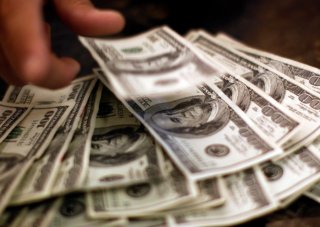The Federal Reserve Has a Stimulus Problem
The leaders of the Dallas and St. Louis Fed banks have indicated that “the day is growing closer” for the Fed for “paring back the central bank’s bond-buying stimulus.” But one crucial governor disagrees.
In addition to the fiscal stimulus packages that Congress has passed in 2020 and 2021 to deal with the pandemic and its economic effects, the Federal Reserve has also been engaging in its own stimulus efforts.
But according to a report in the Wall Street Journal this week, some Fed governors are considering tapering aid.
The leaders of the Dallas and St. Louis Fed banks have indicated that “the day is growing closer” for the Fed for “paring back the central bank’s bond-buying stimulus.” But one crucial governor disagrees.
“It’s clear that the economy is improving at a rapid rate, and the medium-term outlook is very good,” John Williams, the head of the Federal Reserve bank of New York, said in a virtual appearance Monday, as cited by the Journal. “But the data and conditions have not progressed enough for the [Federal Open Market Committee] to shift its monetary policy stance of strong support for the economic recovery,” he said.
Federal Reserve Chair Jerome Powell is set to testify before Congress Tuesday, likely about the question of how soon the Fed might raise interest rates, in the face of growing inflation concerns. The opening statement of Powell’s testimony, meanwhile, was released Monday.
“Since we last met, the economy has shown sustained improvement. Widespread vaccinations have joined unprecedented monetary and fiscal policy actions in providing strong support to the recovery,” the statement said. “Indicators of economic activity and employment have continued to strengthen, and real GDP this year appears to be on track to post its fastest rate of increase in decades. Much of this rapid growth reflects the continued bounce back in activity from depressed levels.
“To conclude, we understand that our actions affect communities, families, and businesses across the country. Everything we do is in service to our public mission. We at the Fed will do everything we can to support the economy for as long as it takes to complete the recovery,” Powell will say.
The dollar, in the meantime, has seen a rise of late.
“The dollar index has seen a steady decline since March, however, since the Fed announcement we’ve seen a swift reversal as market positioning is set to reverse and the recent build-up in net USD shorts are squared off,” Ali Jaffari, head of North American capital markets at Validus Risk Management, told CNBC.
“This renewed momentum in USD is expected to continue in the near to medium term as a hawkish Fed paints a majestic picture of hiking rates faster and sooner.”
Reuters, meanwhile, reported last week that central banks in other countries are also “laying the groundwork for a transition to life with less global stimulus,” in the event that the U.S. does so. These central banks, per the report, are “haunted by memories of past U.S. interest rate hikes.”
Stephen Silver, a technology writer for The National Interest, is a journalist, essayist and film critic, who is also a contributor to The Philadelphia Inquirer, Philly Voice, Philadelphia Weekly, the Jewish Telegraphic Agency, Living Life Fearless, Backstage magazine, Broad Street Review and Splice Today. The co-founder of the Philadelphia Film Critics Circle, Stephen lives in suburban Philadelphia with his wife and two sons. Follow him on Twitter at @StephenSilver.
Image: Reuters

